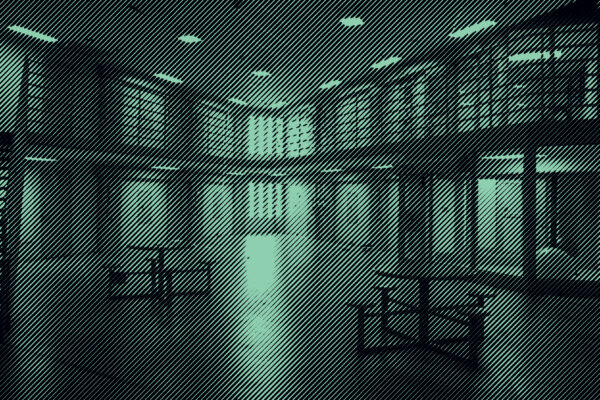A private prison is a prison where a third party is contracted by a government agency to house its’ prisoners. Typically, a private prison company will enter a contract that guarantees minimum bed space and then is paid a per diem rate for that space. So, if the prison has 1,000 people in it, but the contract guarantees payment for at least 2,000 people, the company is still getting those extra dollars whether the beds are occupied or not. This creates a dangerous incentive to keep prisons full to get the most “bang for your buck.”
Incoming President Trump has made it clear that he plans mass deportations as soon as he steps back into office. The private prison industry has not been shy about how these efforts would likely be a boon for their company’s bottom lines. It’s no surprise that the week after the November election, Geo Group and Core Civic, the two largest private prison operators, saw their stocks surge. Ohio must cut ties with private prisons before it’s too late.
Prison privatization peaked around 2012 and then saw a bit of a dip during the current Biden Administration. Sadly, social justice advocates are bracing for a return of prisons for profit nationwide. Deprivation of physical freedom is a severe interference with liberty, and that power should not be given to a private entity whose motivation is money, not public safety. Yet, across the country 8% of our total prison population are in private prisons. As of March 2024, in Ohio, 4,948 people, or about 9% of our prison population are in a privately owned or operated prison.
A look at Ohio’s Private Prisons
Lake Erie Correctional Institution (LaECI)
Ohio has a dubious distinction. In 2012, we became the first state to sell a prison to a private company when we sold the Lake Erie Correctional Institution (LaECI) to CoreCivic (formerly the Corrections Corporation of America).
At the time, CoreCivic paid $72.7 million dollars for the facility and then entered into a contract through June 2032 to house Ohio Department of Rehabilitation and Corrections (ODRC) prisoners. While LaECI was originally designed to house 1,380 people, CoreCivic reconfigured various day use rooms to hold more people—now totaling 1,798. The current per diem rate that CoreCivic receives from DRC is $48.51 at a guaranteed 95% occupancy rate. The minimum daily amount received by CoreCivic is $78,499 – totaling more than $28.5 million dollars each year. Not to mention, the annual ownership fee that Ohio pays CoreCivic to recoup the costs of purchase to the tune of $3.8 million each year. As of March 2024, LaECI houses 1,742 people, or about 4% of our prison population.
In the first few years that CoreCivic took over LaECI, inmate-on-inmate violence increased by 180%, inmate-on-staff violence increased by 300%, and the total disturbance more than doubled. Check out our documentary, Prisons For Profit, detailing the harrowing first 18 months.
Northeast Ohio Correctional Center (NEOCC)
Northeast Ohio Correctional Center (NEOCC) is a privately-operated facility run by CoreCivic. It houses individuals who are incarcerated from either ODRC or the United States Marshals Service. The ODRC contract with NEOCC began in late 2017. Currently, NEOCC houses Level 2 (medium) and Level 3 (close) security individuals, and specializes in housing folks who allegedly violated Adult Parole Authority (APA) and must return for additional prison time. ODRC contracts with CoreCivic for 996 beds in NEOCC. As of March 2024, 905 beds were full. The per diam rate is $65.17 totaling $58,978 each day. It’s unclear if NEOCC is also guaranteed at a 95% capacity rate. If so, this goes up to $61,664 each day.
Who else is in NEOCC – or might be?
- The U.S. Marshals Service assumes custody of individuals arrested by all federal agencies and is responsible for the housing and transportation of prisoners from the time they are brought into federal custody until they are either acquitted or incarcerated. The U.S. Marshals Service houses over 63,000 prisoners in federal, state, local and private jails. The U.S. Marshals Service contracts with approximately 1,200 state and local governments to rent jail space. In Ohio, the U.S. Marshal Service uses the Northeast Ohio Correction Center. In 2022, the U.S. Marshal Service stopped holding individuals for Immigration and Customs Enforcement. However, given the incoming Trump Administration’s posture, it’s likely this may change.
Much like LaECI above, NEOCC’s history is plagued with problems. In CoreCivic’s first years managing NEOCC in the 1990s it had over a dozen stabbings, several murders and a major escape. The City of Youngstown even filed suit to force CoreCivic to comply with basic safety standards, and a lawsuit brought by prisoners settled in March 1999 for almost $2.5 million, including attorneys’ fees. So why would we re-up that contract and get back in the business of private prisons? It’s maddening.
North Central Correctional Institution (NCCI)
CoreCivic isn’t the only private prison game in town. The Management & Training Corporation (MTC) operates North Central Correctional Institution. The designated bed capacity for NCCI is 2,706. As of March 2024, the population at NCCI was 2,301. The current per diem rate that MTC receives from DRC is $49.63 at a guaranteed 95% occupancy rate. The minimum daily amount received by MTC is $127,584 – totaling more than $46.5 million dollars each year.
Private prisons are notorious for creating a more dangerous environment for both staff and prisoners. Generally, private prisons are less effective, cut basic services such as medical care, and see increased assaults, higher staff turnover, and unacceptable conditions. We mustn’t let the past progress be ripped away and continue to call for an end to prisons for profit in Ohio and across the nation.



